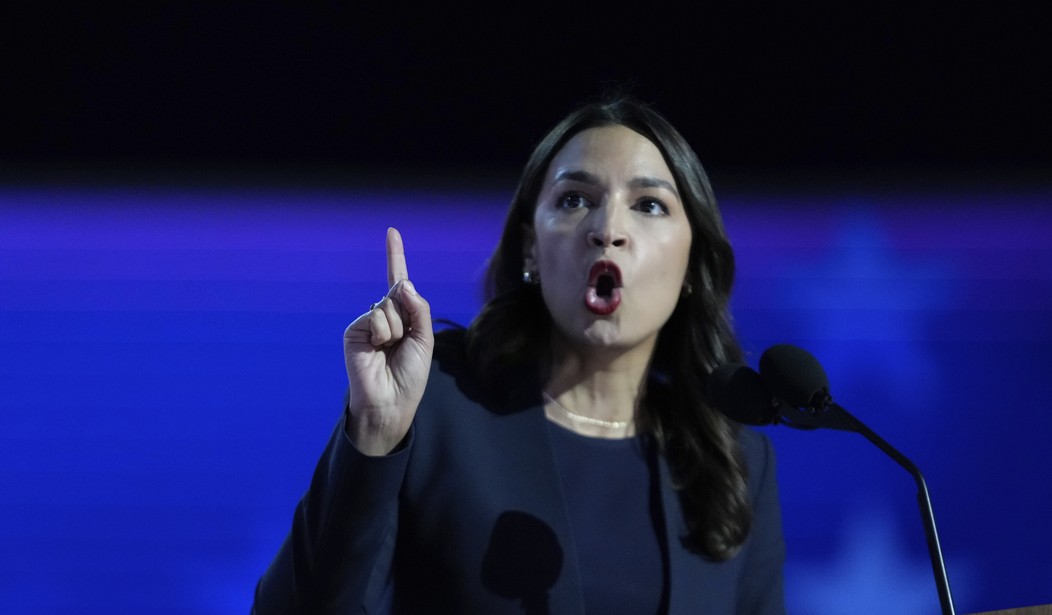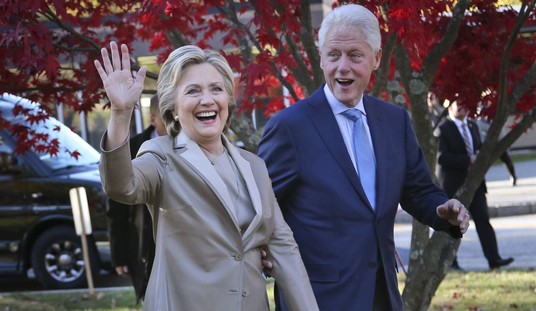The Democratic Party is at a crossroads.
With each election cycle, the same old questions resurface: Who should lead the party? How can Democrats reconnect with voters in the heartland? And why does the party keep bleeding support among working-class Americans?
Last week, David Axelrod tossed a name into the ring for the next DNC chair: Rahm Emanuel. Predictably, this suggestion set off a firestorm—none louder than from Representative Alexandria Ocasio-Cortez, whose critique of the Democratic establishment feels more at home in a Tea Party playbook than in traditional Democratic discourse.
Ocasio-Cortez, better known as AOC, wasted no time attacking the idea of another Obama-era leader taking the reins of the Democratic National Committee.
Her argument? These establishment figures oversaw some of the party’s most devastating electoral losses. In fact, she called Emanuel and his ilk a "disease."
Rep. Alexandria Ocasio-Cortez (AOC) launched a blistering critique of former Chicago mayor Rahm Emanuel's potential bid for Democratic National Committee (DNC) chair, slamming the Democratic establishment's donor-focused approach.
"There is a disease in Washington of Democrats who spend more time listening to the donor class than working people," Ocasio-Cortez wrote on X, formerly Twitter. "If you want to know the seed of the party's political crisis, that's it."
The sharp rebuke from the progressive congresswoman came after veteran Democratic strategist David Axelrod publicly pitched Emanuel, the current U.S. Ambassador to Japan, to lead the DNC when current chairman Jaime Harrison's term concludes in March.
And, honestly, she has a point. Under Barack Obama’s leadership, Democrats experienced some of their worst down-ballot performances in modern history. But is the party’s problem really the so-called Obama coalition, or is it AOC and her loud progressive faction that’s driving voters away?
The Ghosts of Obama’s Leadership
Let’s not sugarcoat it—Barack Obama was a political phenomenon. His 2008 and 2012 campaigns were masterclasses in coalition-building, bringing together young voters, minorities, and educated urbanites. But the success of Obama’s personal brand didn’t translate into lasting gains for the Democratic Party.
READ MORE: Barack Obama: The Man Behind the Democrats' Biden Dilemma
In fact, during his presidency, Democrats lost more than 900 state legislative seats, 13 governorships, 69 House seats, and 13 Senate seats. The working-class voters in Pennsylvania, Michigan, and Wisconsin who helped Obama win twice? Many of them jumped ship in 2016, frustrated by policies they felt prioritized elite academic interests over their needs.
Yet Democrats seem intent on avoiding this painful truth. Rather than reckoning with Obama’s shortcomings as a party leader, they continue to idolize his approach. The problem, though, is that the coalition he built wasn’t designed for longevity—it was built for Obama himself. His successors, from Hillary Clinton to Joe Biden, have struggled to revive that same magic, leaving the party floundering in its search for a winning strategy.
The AOC Problem: Progressivism Without a Plan
Enter AOC and the progressive wing of the Democratic Party. While Ocasio-Cortez is right to critique the establishment’s failures, her own vision for the party’s future is deeply out of step with most Americans. It’s not just her policies—though they are divisive enough on their own—it’s her rhetoric. From calling Israel a “genocidal apartheid state” to championing policies like modern monetary theory (essentially printing money without regard for inflation), AOC represents a far-left worldview that alienates moderate and working-class voters.
Take, for example, her support for allowing transgender athletes to compete in women’s sports. Polls show that around 70 percent of Americans oppose this idea, including many Democrats. Or her position on Israel, which has put her at odds with the majority of Americans who favor strong U.S.-Israel relations. These aren’t fringe issues—they’re flashpoints that reveal a growing disconnect between the Democratic Party’s loudest voices and its voter base.
Why Rahm Emanuel Represents a Different Path
Axelrod’s suggestion of Rahm Emanuel as DNC chair may feel like a blast from the past, but it underscores a key point: Democrats need leaders who understand the importance of winning elections, not just making noise. Emanuel, for all his flaws, has a proven track record of political strategy. As a congressman, he helped engineer the Democratic takeover of the House in 2006. As mayor of Chicago, he faced his share of controversies, but his pragmatic, results-driven approach stands in stark contrast to the idealism of the progressive left.
What Emanuel represents is a return to basics—reaching out to working-class voters, shoring up support in swing states, and focusing on issues that resonate with everyday Americans. It’s not glamorous work, but it’s what the Democratic Party needs if it wants to remain competitive.
Why Healthy Competition Matters—Even for Republicans
For conservatives, it might be tempting to sit back and enjoy the Democratic Party’s internal chaos. But a weak opposition party isn’t good for anyone. Just as competition drives innovation in business, it pushes political parties to be better. Without a strong Democratic Party, Republicans risk becoming complacent, content to manage the status quo rather than fight for meaningful reforms.
The Republican Party’s recent gains among working-class voters didn’t happen in a vacuum—they happened because Democrats stopped listening to those voters. But complacency is dangerous. If Republicans don’t continue to earn the trust of blue-collar Americans, the pendulum could swing back. A healthy two-party system keeps both sides accountable and ensures that voters, not activists or special interests, drive the political agenda.
Finding the Balance
The Democratic Party’s future hinges on its ability to balance pragmatism with progressivism. Leaders like Rahm Emanuel may not excite the base, but they can win elections. Figures like AOC, on the other hand, energize a vocal minority while alienating the majority. The challenge for Democrats is to find a middle ground—someone who can bridge the gap between the party’s progressive aspirations and its practical need to govern.
As the 2024 election postmortems continue, one thing is clear: Democrats can’t afford to keep making the same mistakes. Whether they take this advice is another story entirely.













Join the conversation as a VIP Member